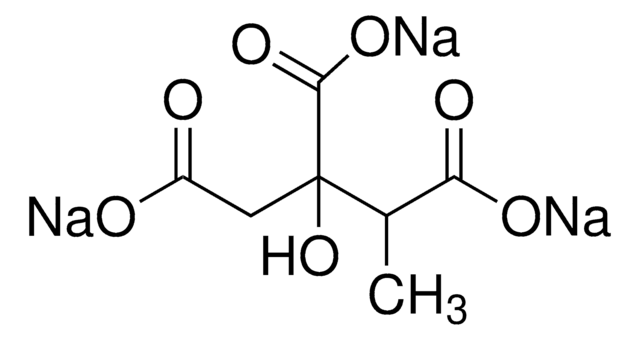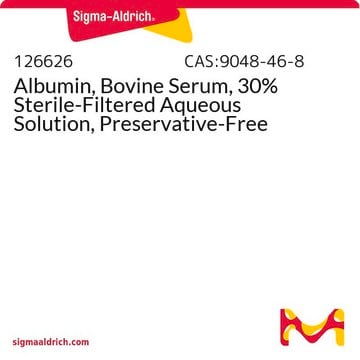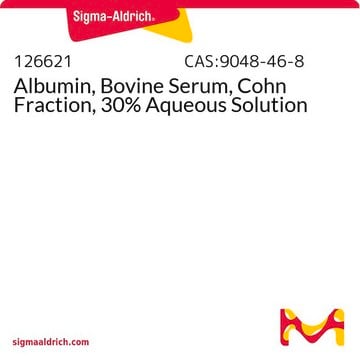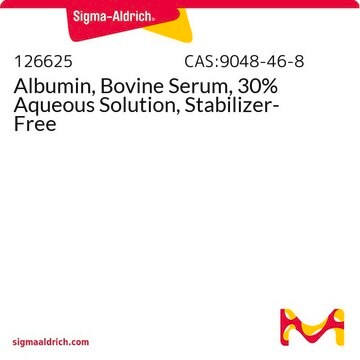A7284
Bovine Serum Albumin solution
30%±2% in 0.85% sodium chloride, aseptically filled
Synonym(s):
Albumin solution from bovine serum, BSA solution
About This Item
Recommended Products
biological source
bovine
Quality Level
sterility
aseptically filled
Assay
28-32% protein basis (biuret)
form
solution
purified by
heat shock fractionation
contains
0.1% sodium azide as preservative
does not contain
stabilizer
origin
USA origin
concentration
28-32% protein (biuret)
30%±2% in 0.85% sodium chloride
technique(s)
ELISA: suitable
UniProt accession no.
storage temp.
2-8°C
Gene Information
bovine ... ALB(280717)
Looking for similar products? Visit Product Comparison Guide
General description
Application
- to study the effects of plasma protein on sulfated glycosaminoglycans (sGAGs)
- to histologically evaluate the implanted allogeneic mesenchymal stem cells (MSCs) alginate constructs
- as a component of phosphate-buffered saline (PBS) to treat red blood cells (RBC) for sample preparation
Biochem/physiol Actions
Storage Class Code
12 - Non Combustible Liquids
WGK
WGK 3
Flash Point(F)
Not applicable
Flash Point(C)
Not applicable
Personal Protective Equipment
Choose from one of the most recent versions:
Certificates of Analysis (COA)
Don't see the Right Version?
If you require a particular version, you can look up a specific certificate by the Lot or Batch number.
Already Own This Product?
Find documentation for the products that you have recently purchased in the Document Library.
Customers Also Viewed
Our team of scientists has experience in all areas of research including Life Science, Material Science, Chemical Synthesis, Chromatography, Analytical and many others.
Contact Technical Service














